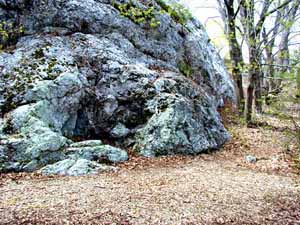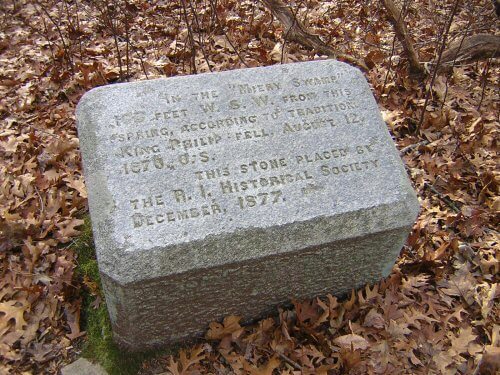 A First Book in American History
First Book in American History
A First Book in American History
First Book in American History


 A First Book in American History
First Book in American History
A First Book in American History
First Book in American History

Study the lesson for one week.
Over the week:
Activity 1: Narrate the Story
Activity 2: Study the Story Picture

Activity 3: Study King Philip's Seat and Marker
King Philip used to convene meetings at a rock formation called King Philip's Seat.
Study the picture of King Philip's Seat, which still exists today in Bristol, Rhode Island on Mount Hope.

See also the stone at Mount Hope that marks where King Philip died on Mount Hope. The stone says: In the 'Miery Swamp,' 100 feet W.S.W. from this spring, according to tradition, King Philip fell, August 12, 1676, O.S. This stone placed by the R.I. Historical Society. December, 1877.

Activity 4: Complete Copywork, Narration, Dictation, and Art
